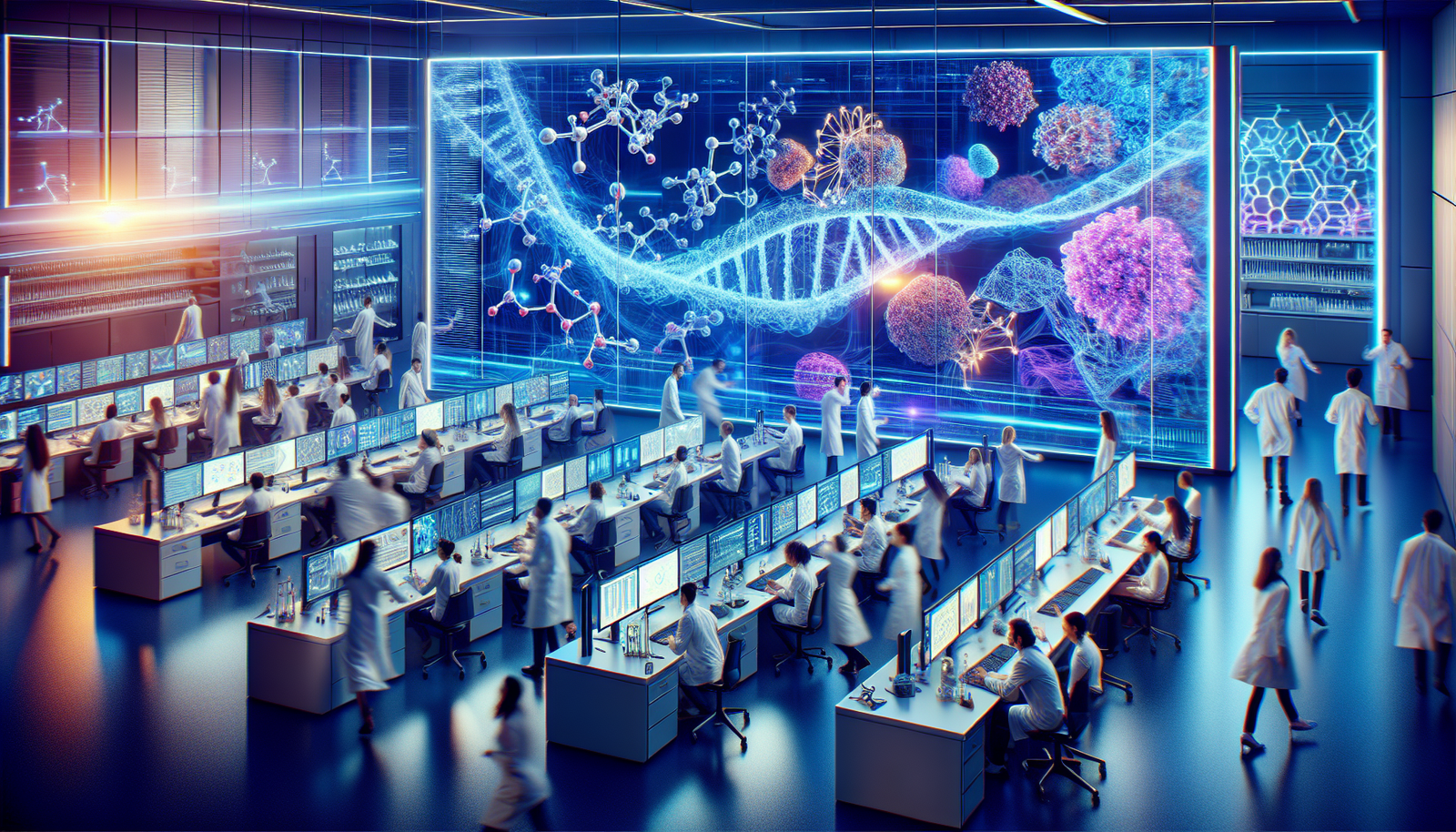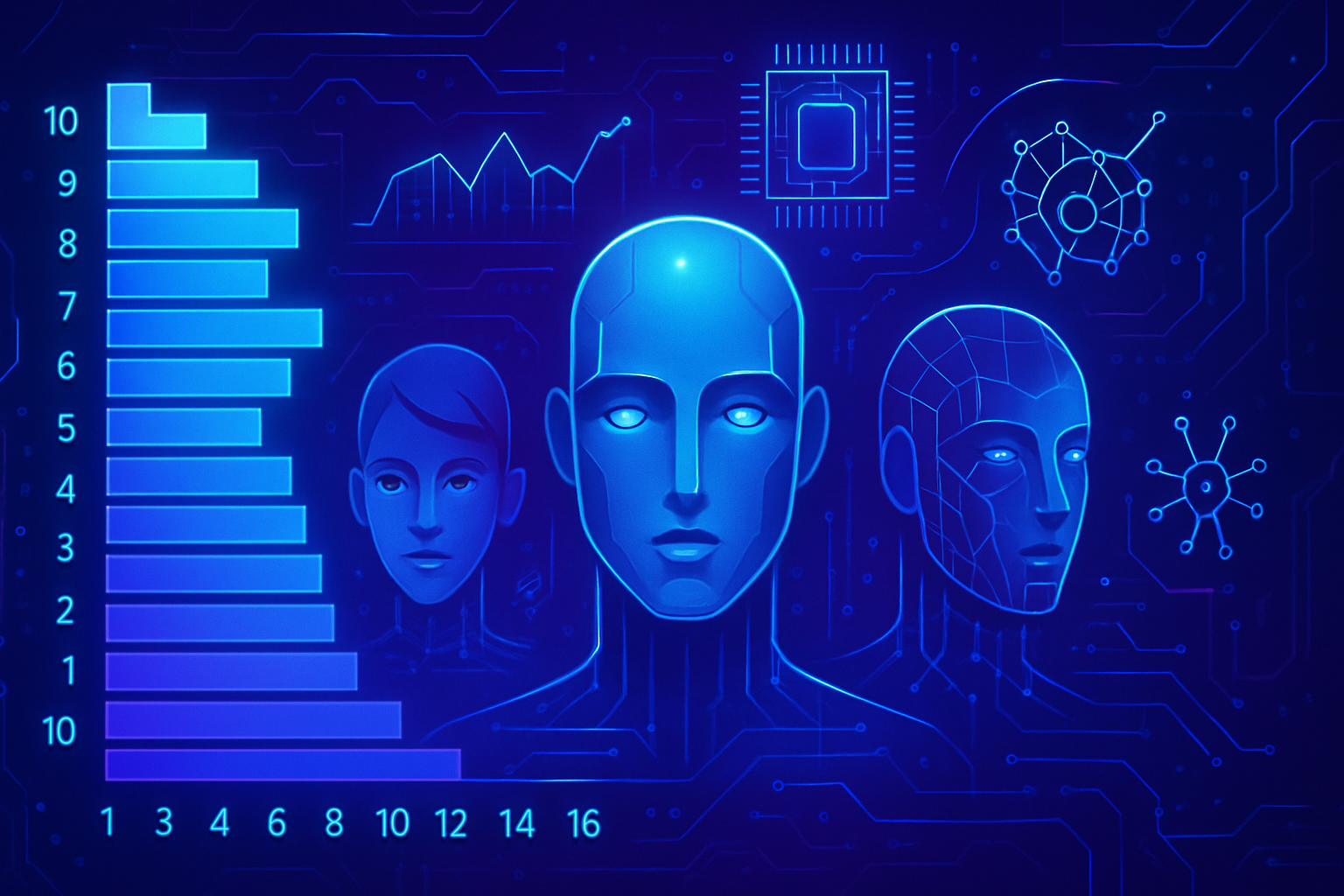The emergence of generative artificial intelligence is transforming scientific research. Chemists at MIT are harnessing this technology to accelerate the calculation of 3D genomic structures. By synthesizing complex data, this approach promises a revolution in understanding patterns of gene expression. The implications extend well beyond simple modeling, touching the very foundations of cellular biology. New methods, combining sophisticated algorithms and biology, offer a fresh perspective on the relationship between genomic structure and cellular function.
Dynamics of gene expression
Every cell in the organism has the same genetic sequencing, but it only expresses a subset of these genes. These specific expression patterns, which determine the differences between a neuron and a skin cell, result partly from the three-dimensional structure of DNA. This architecture impacts gene accessibility, thus influencing their functions.
MIT innovations in generative AI
Chemists at MIT have developed an innovative method to deduce the three-dimensional structures of the genome using generative artificial intelligence. Their technique can predict thousands of structures in just minutes, significantly surpassing traditional experimental methods that are often lengthy and labor-intensive.
Advantages of the new approach
By using this model, researchers can more easily study how the three-dimensional organization of the genome affects gene expression patterns within individual cells. << Our goal was to predict the three-dimensional structure of the genome from the DNA sequence >>, says Bin Zhang, associate professor of chemistry and lead author of the study.
Understanding chromatinization
Inside the cell nucleus, DNA and proteins form a complex structure known as chromatin. This macromolecule, organized at several levels, allows for the condensation of up to two meters of DNA within a nucleus measuring only a hundredth of a millimeter in diameter. DNA strands wrap around histone-type proteins, creating a structure akin to beads strung on a thread.
Epigenetic modifications and gene expression
Epigenetic modifications, which act as chemical tags on DNA, attach at specific locations and vary according to cell type. These marks influence the conformation of chromatin and thus the accessibility of surrounding genes. Consequently, the configuration of chromatin plays a key role in gene expression depending on cell type or at different times within the same cell.
Limitations of experimental methods
Over the past two decades, experimental techniques have been developed to determine the structures of chromatin, such as the Hi-C method. This technique links adjacent DNA strands within the nucleus, allowing researchers to map segments that are close to one another, but it requires a considerable investment of time, taking up to a week to generate data for a single cell.
The ChromoGen model
To overcome these challenges, Zhang and his team developed an AI model named ChromoGen. This model leverages recent advances in generative AI to quickly and accurately predict the chromatin structures of individual cells. The model analyzes DNA sequences and predicts the chromatin conformations that these sequences could produce in a cell.
Execution and speed of predictions
This high-performance model can generate predictions at an unmatched speed compared to experimental techniques. According to Schuette, << you could spend six months running experiments to obtain a few structures of a certain cell type. With our model, you can generate a thousand structures in a particular region in 20 minutes on a single GPU >>.
Validation of predictions
After training, researchers used their model to generate structure predictions for over two thousand DNA sequences, comparing them to experimentally determined structures. The results show that the structures generated by the model match or closely resemble the experimental data.
Potential applications of the model
The model’s flexibility will also allow exploration of differences in chromatin structures between cell types. This innovation could facilitate the analysis of the impact of these variations on cellular function, as well as the study of chromatin changes in the context of DNA mutations leading to diseases.
Access and scientific collaboration
The researchers have decided to share all their data and the model with the scientific community, making it accessible for other interested teams. This decision could foster future advancements in fields related to regenerative biology and personalized medicine.
The research has been funded by the National Institutes of Health, highlighting the growing importance of AI in driving modern science.
Frequently asked questions about generative artificial intelligence at MIT
How does generative artificial intelligence help determine 3D genomic structures?
MIT chemists use generative artificial intelligence models to quickly predict chromatin conformations, allowing for a more efficient analysis of genomic structures in three dimensions. This greatly improves speed compared to traditional experimental methods, which can be lengthy and labor-intensive.
What is the importance of modeling 3D genomic structures?
Modeling 3D genomic structures is essential for understanding how different regions of the genome interact, influence gene expression, and determine specific cellular functions, which is crucial for studies in biology and medicine.
What limitations did researchers face before using generative AI?
Previously, experimental techniques like Hi-C were very lengthy and required a lot of work, taking up to a week to analyze a single cell. These methods also did not provide a complete view of the diversity of possible structures in the genome.
How does the AI model developed by MIT chemists work?
The model, named ChromoGen, combines deep learning components to analyze DNA sequences and chromatin accessibility data, allowing for rapid and accurate prediction of chromatin structures.
What is the time required to generate predictions with this model compared to other methods?
Using this model allows generating thousands of structures in just 20 minutes, while experimental techniques can require months of work for similar results.
Are the predictions made by the AI accurate?
Yes, the results provided by the AI model are very similar to the structures obtained through experimental methods, thus confirming the reliability of this new approach.
What is the scope of the application of this AI model in genomic research?
This model can be used to study how chromatin structures vary between different cell types and how these variations influence gene expression. It also opens up perspectives on the analysis of DNA mutations and their potential impact on diseases.
How did MIT researchers validate their AI model?
Researchers tested their model by comparing predicted structures for more than 2,000 DNA sequences with experimental data, thereby validating the accuracy of the predictions made.
What types of cells were used to train this artificial intelligence model?
The model was trained using data from 16 human B lymphocyte cells, enabling it to be precisely tailored to the peculiarities of this cell category.
Are there potential clinical implications of this research?
Yes, the tools developed could help better understand the underlying mechanisms of various genetic disorders, thus offering possibilities for the development of targeted and personalized treatments in modern medicine.






